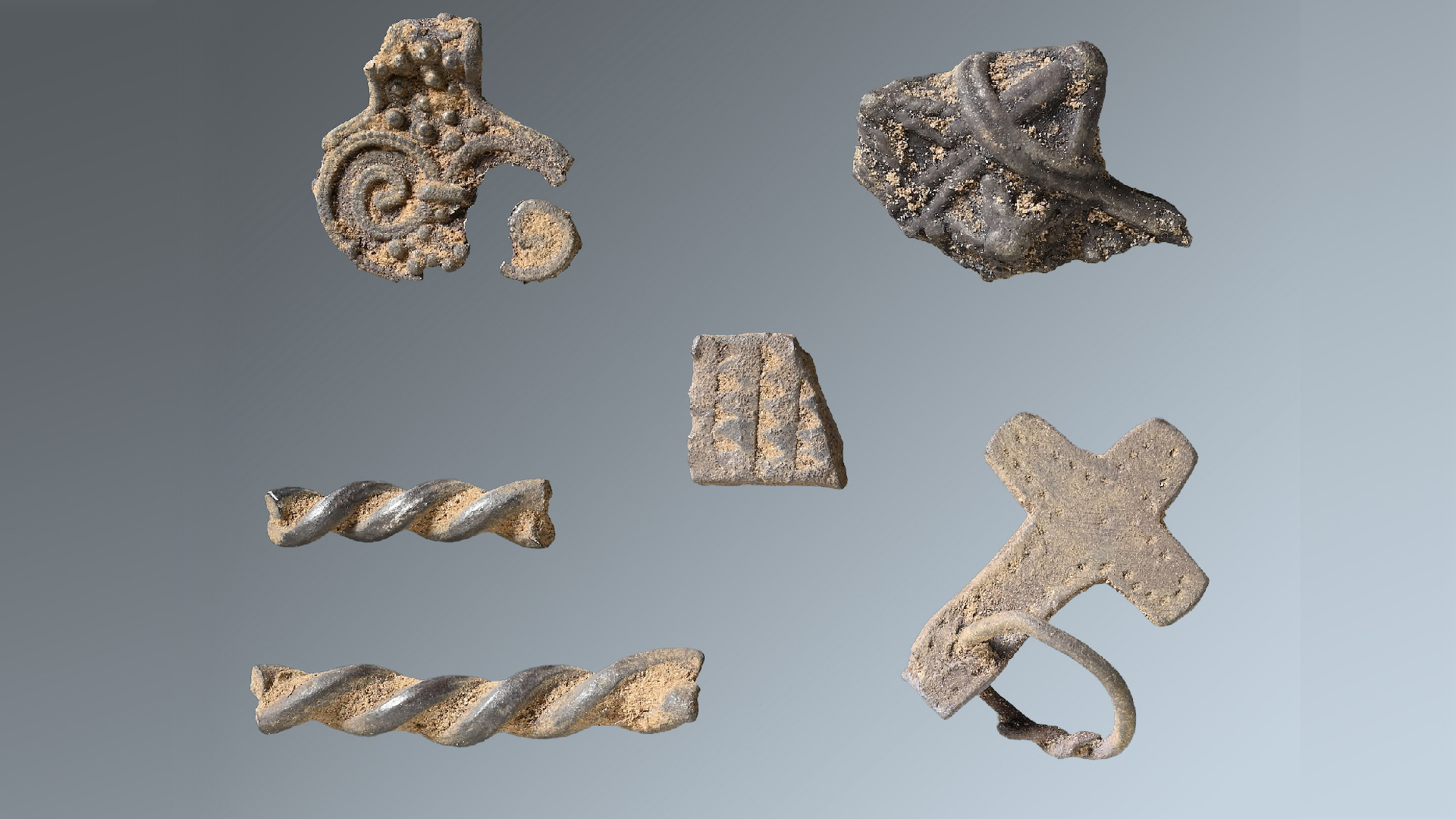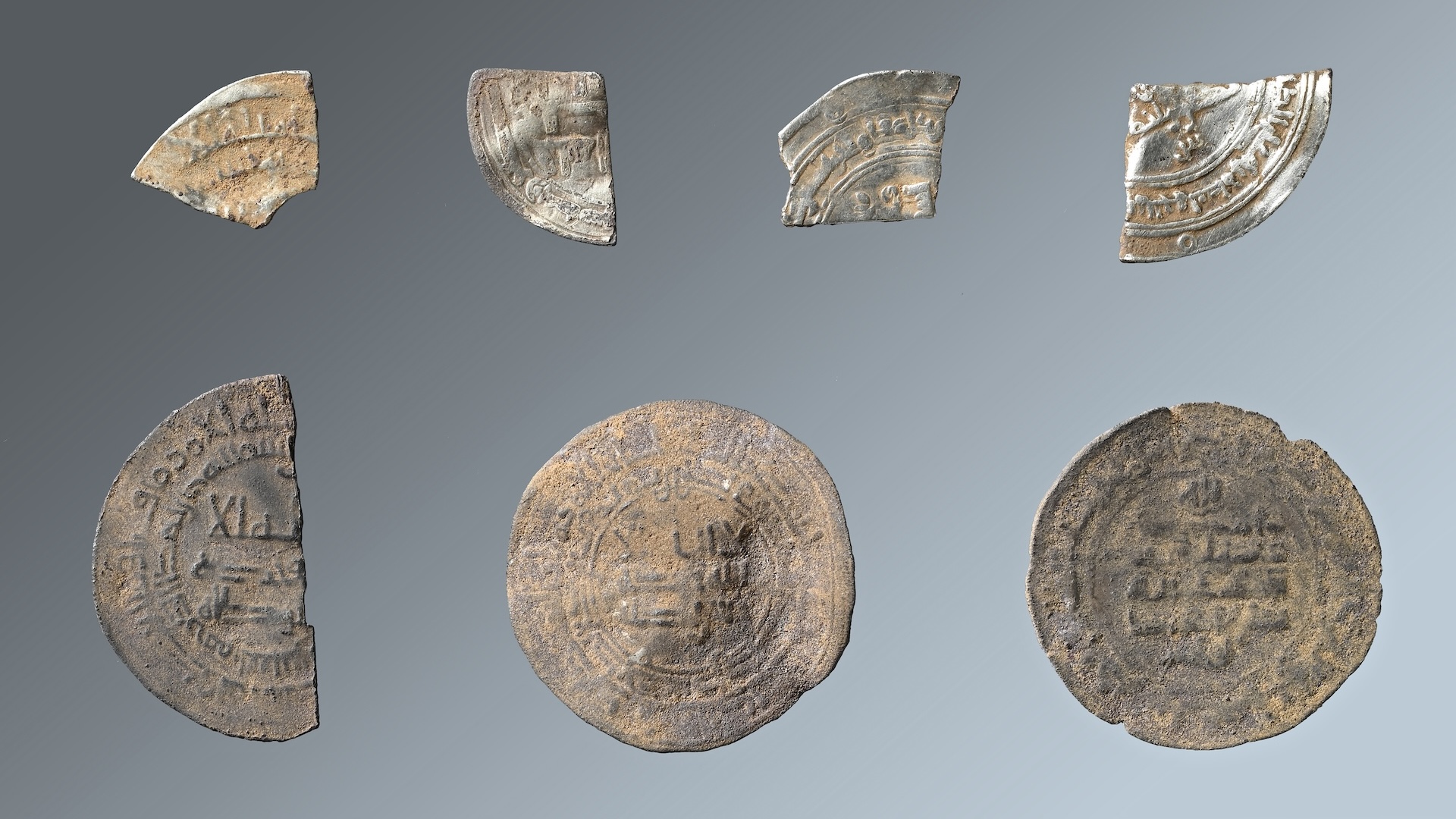1,000-year-old Viking Age hoard has a pendant that may be a cross or Thor's hammer
A metal detectorist in Germany has unearthed an Early Middle Ages hoard that contains 200 artifacts, including a pendant that may be a cross or an unfinished Thor's hammer.

A metal detectorist in Germany has discovered a Viking Age hoard that includes about 200 riches from the European world, including Arabic coins, ingots, and a pendant that may be a cross or an unfinished Thor's hammer.
If the pendant is a cross, it's "possibly an early sign of the onset of Christianisation" in the region, Birte Anspach, a spokesperson for the State Archaeological Office of Schleswig-Holstein, told Live Science in an email.
The hoard was found in northern Germany near Haithabu, an important maritime trading center during the Viking Age (A.D. 793 to 1066). Christianity started spreading at Haithabu when St. Ansgar traveled there in the ninth century.
"However, it was not the case that Ansgar came — and suddenly everyone turned away from the old gods and followed the Christian faith," Anspach said. "Christianisation was a long process that spanned several generations."
For the next century, most people around Haithabu remained pagan. But archaeologists have found Christian symbols in burials there from this time, so this pendant may be one of the few that belonged to an early convert.
The eyelet on the pendant is "located on the longer part of the 'cross', so that the piece hangs upside down when worn," Anspach noted.
It's also possible that the pendant is an unfinished Thor's hammer. Such pendants symbolized adherence to the old Norse gods as Christianity was taking root in Scandinavia and other parts of Europe. In Norse mythology, the divine hammer — known as Mjölnir — was crafted by dwarves for the gods of Valhalla, and Thor later used it in his war against giants.
Get the world’s most fascinating discoveries delivered straight to your inbox.
Related: 32 stunning centuries-old hoards unearthed by metal detectorists

Archaeologists excavate the hoard, which is near the Viking Age trading center of Haithabu.

The hoard included pieces of hacksilver and Arabic coins known as dirhams.
Discovery by the Baltic
The 1,000-year-old hoard was found by Arjen Spießwinkel, who is part of a volunteer detector group in Schleswig-Holstein. All volunteers go through a four-day training course and an exam before getting permission to inspect the area with a metal detector. Spießwinkel, who has already made several historical finds, was recently traveling along the Schlei, an arm of the Baltic Sea next to Haithabu, when he found the hoard and then notified state archaeologists, Anspach said.
In addition to the pendant, ingots and dirhams (Arabic coins), the hoard contained hacksilver, pieces of silver that were used monetarily for their weight; a pottery shard; and a whetstone, a stone used for sharpening tools, which could hint at a nearby unknown settlement.
"These finds offer fascinating insights into the history of the 10th century — a time of intensive trade, cultural exchange and religious change," Anspach said. "It is therefore not surprising to discover a hoard near the Schlei. Whether it is actually a hidden depot or whether there was a settlement nearby cannot be said for certain at this stage."
Viking quiz: How much do you know about these seaborne raiders, traders and explorers?

Laura is the managing editor at Live Science. She also runs the archaeology section and the Life's Little Mysteries series. Her work has appeared in The New York Times, Scholastic, Popular Science and Spectrum, a site on autism research. She has won multiple awards from the Society of Professional Journalists and the Washington Newspaper Publishers Association for her reporting at a weekly newspaper near Seattle. Laura holds a bachelor's degree in English literature and psychology from Washington University in St. Louis and a master's degree in science writing from NYU.
You must confirm your public display name before commenting
Please logout and then login again, you will then be prompted to enter your display name.


